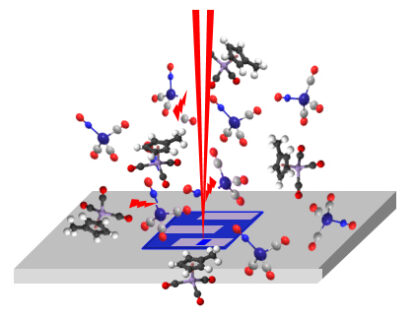DFG supports research on novel nanolithography method
The controlled fabrication of structures with nanoscale functionality is one of the most intensely studied topics in modern nanoscience. The crucial issue is to prepare structures with defined chemical composition as well as stable, but nanoscale morphology. A novel approach is the controlled additive fabrication of metallic nanostructures with focused soft X-rays (focused X-ray beam induced deposition – FXBID). The method has been developed by a collaborative research team from the Department of Chemistry and Chemistry of FAU and the Swiss Light Source in Villigen. It combines the concepts of electron beam induced deposition (EBID) and X-ray lithography. The nano-beam of a soft X-ray microscope is employed to crack metal organic precursor molecules in the gas-phase by resonant X-ray irradiation to deposit nanostructures onto a solid substrate. The use of an X-ray microscope offers the advantage of in-situ characterization of size, chemical purity and magnetic properties of the fabricated nanostructures.
The German Research Foundation (DFG) has now granted 320.000€ to Dr. Andreas Späth (PostDoc in the group of Prof. Dr. Rainer Fink, Physical Chemistry) for detailed studies on the fundamental processes leading to X-ray beam induced precursor cracking. Andreas Späth will lead a team of experts from FAU (Physical and Theoretical Chemistry), Swiss Light Source and ELETTRA (Trieste, Italy) shine light onto the fundamental processes in FXBID and improve the technology in terms of chemical purity and minimum size of the fabricated nanostructures.

